Sharing AHDB’s Strategic Farm demonstrations and practical ‘how to’ resources virtually

AHDB’s Strategic Farm Week goes digital
Usually, summer sees each AHDB Strategic Cereal Farm host open their doors to those interested in learning about the research programmes put into field scale demonstrations onfarm. However, due to Government restrictions, this year’s programme took place in a purely digital format comprising videos, webinars and a podcast. The webinars during the week covered a range of topics including monitoring crop development, pests and diseases, reducing chemical inputs and masterclasses on crop establishment, soil structure assessments, mole drainage and soil loosening. Experts from AHDB and across the industry led the sessions including pioneering farmers Simon Cowell and Tim Parton, and soil expert Philip Wright.
This year, Strategic Farm East host, Brian Barker from Lodge Farm, Suffolk and Strategic Farm West host Rob Fox at Squab Hall, Warwickshire, were joined by a third. Farm manager David Aglen, is the newcomer having joined the Strategic Cereal Farm programme earlier this year, extending the network up to Scotland for the first time. Having yet to start trials at Balbirnie Home Farms, David is interested in looking at regenerative agricultural practices, plant and soil health and carbon offsetting through the Strategic Farm Scotland programme. David said: “There is little research going on into regenerative agriculture in the UK currently. This is the direction we want to take our business so working with AHDB offers the opportunity to harness the research available and get more work done to help us and the industry succeed in moving towards our goal.”
At Brian Barker’s farm, a lowering inputs demonstration is one of several demonstrations taking place, which was showcased during the week alongside research looking at cover crops, perennial flower strips and boosting early crop biomass. Lower input, higher margin farming, regenerative farming and soil management all came together in one of the key webinars of the week in which Brian Barker, Tim Parton and Simon Cowell took part, see the featured article. Farm manager, Rob Fox is overseeing a separate set of demonstrations in the west of the country looking at soil cultivations, the impact of summer catch crops and pests and natural enemies.
This season has been a particular struggle for Rob, who at one point was considering throwing in the towel altogether. Following a season of heavy rainfall, he struggled to get crops in the ground, let alone establish his demonstrations. As a result, a significant portion of the research programme at his farm had to be written off.
Since then Rob has soldiered on having endured, along with the rest of the country, a prolonged dry spell; going from one extreme to the other. “It’s been a tough growing year meaning we’ve had to reduce what we had planned for the season. “It’s not all been bad news though as we’ve been able to add in an additional demonstration looking at summer catch crops. We’ve planted two different mixes: one is a bought-in mix of phacelia and fodder raddish, the other is home saved spring beans and spring barley. The aim is to see if they is any benefit to the following wheat crop.” Attention now turns to later in the year, as the summer approaches and harvest 2020 beckons. AHDB looks forward to your joining us to hear about the results from all the harvest 2020 demonstrations at Lodge Farm and Squab Hall in the autumn.
To access any of the content from Strategic Farm Week 2020, including watching back the webinar videos, please visit: https://ahdb.org.uk/sfweek2020 To find out more about the host farms please visit the dedicated webpages using the links below:
• Strategic Cereal Farm East (Lodge Farm): https://ahdb.org.uk/farmexcellence/strategic_cereal_farm_ east
• Strategic Cereal Farm West (Squab Hall Farm): https://ahdb.org.uk/ farm-excellence/strategic_cereal_ farm_west
• Strategic Cereal Farm Scotland (Balbirnie Home Farms): https:// ahdb.org.uk/farm-excellence/ strategic_cereal_farm_scotland
How to decide when to lower inputs
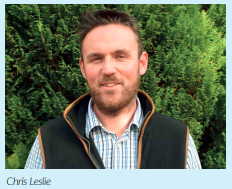
AHDB’s Knowledge Exchange Manager for Scotland, Chris Leslie, hosted the “How to decide when to lower inputs” webinar, as part of Strategic Farm Week in June 2020. Here he talks through some of the key findings and topics of conversation from the webinar, featuring farmers Simon Cowell, Tim Parton, Brian Barker and David Aglen, along with Catherine Harries, AHDB.
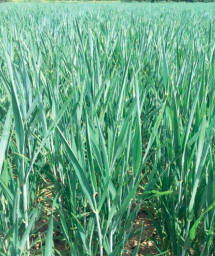
Changing systems, changing mindset and learning to work with nature were key themes throughout this webinar exploring the topic of lowering inputs. This topic is one that is being looked at across the three AHDB Strategic Farms through their demonstrations and six year programme. All of the farms are at differing points on the road to regenerative agriculture, the system of farming principles and practices that increases biodiversity, enriches soils, improves water quality, captures carbon and enhances ecosystem services.
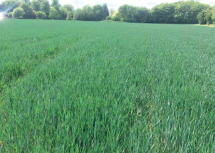
Agriculture is disruptive by its very nature. However, our three Strategic Farmers as well as Tim and Simon, aim to work alongside nature and put soil and the environment at the forefront of their farming system using tools such as IPM and no-till. Tim Parton stated right at the beginning of his presentation, that “I find when you work with nature, rather than fight nature, it works”. A key part of moving towards this system is to find ways to farm with less inputs. For Simon Cowell, this has included a range of options that have been put into place on his heavy clay farm in Essex, such as: stopping growing oilseed rape, the introduction of perennial crops such as lucerme and aiming to overlay crops through the rotation to support soil biology and mycorrhizae.
This change of the rotation has enabled Simon to halve the nitrogen used on farm, from when he was in the previous system of growing solely wheat and oilseed rape. Simon admits that “it’s difficult to back off and say I’m not going to spray any fungicide or put on any phosphate fertiliser” and understands that every farm is set-up differently, with some paying high rents and mortgages. However, the importance of getting your soil in the right condition before you start to reduce inputs was a key part of the solution. For Simon, he has been able to speed up this process by using home-made compost to enable the biology to function and for the nutrients to the circulate and more.
Simon noted that his preference is to not focus on the margins of individual crops instead, ”it’s about the whole rotation that we’re considering, its better to not think about each one individually. It’s a longer term thinking all together ”, he says. Brian Barker also discussed how he is looking at how far he can reduce inputs in his crops at the Strategic Farm East. As one example, a demonstration taking place this year on-farm is looking at reducing plant protection products and fertiliser to see what impact this will have on pest and disease pressure, crop yield and net margin. The farm has applied a reduced input programme in a field of winter wheat and will compare the results with a conventionally managed crop at harvest.
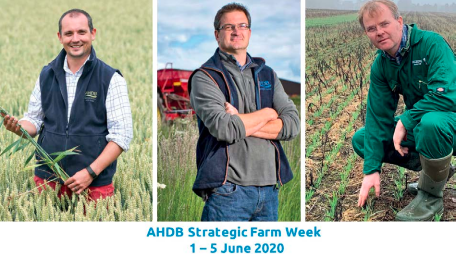
The work is part of Brian’s ongoing interest in looking at how far it is practically possible for farmers to reduce inputs. Last year he tested the natural resistance of winter wheat varieties by applying three different fungicide application programmes to see which gave the best margin. “This is all about changing mindsets as we’re going to have to look at alternative ways of protecting our crops. In this demonstration field, we ploughed it due to previous blackgrass populations, planted naked KWS Siskin seed, applied a pre-emergent herbicide, no insecticide, one PGR at T1 and only spent £14/ha on fungicides at T1 and tebuconazole at T3 due to rust coming in late.” said Brian.
“Weaning myself off using inputs hasn’t been easy and it’ll be interesting to see how this crop does. Last year the yields held up quite well; the wheat that received the lower input programme produced the best cost of production by a long way and yield held surprisingly well. Lack of moisture is clearly going to be significant this season which was similar to last year.”
For farmers starting on the journey, this thinking, following the Strategic Farm work and asking the questions of research, along with building soils might be a good place to start.
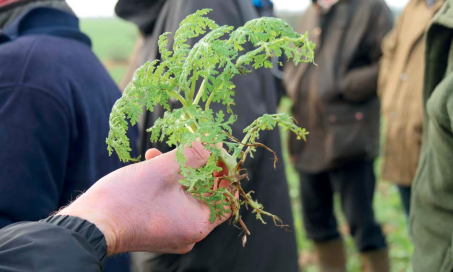
Given the extremes of the last two seasons, some farmers have looked into going back to cultivations when transitioning to a regenerative agriculture system – something that was eluded to several times during the course of the webinar by both Tim Parton and Simon Cowell. Managing these extreme weather patterns is often the difficult part when in transition, as you learn to work with or understand the natural systems. It is acknowledged that it is incredibly hard work and often years of change to take soil from a conventional system before getting to a place where the soil starts to work for you rather than against.
No one piece of machinery holds the key, with all involved in the discussions having different types of machinery on their farms. It has more been the use of synthetic inputs and often a lack of organic nutrition, which has created the current reliance on inputs. We need to start to examine how we look after our soils, so that our crops can remain green for longer when the next dry period appears. It is by doing this that inevitably allows us to reduce our artificial inputs. This webinar was just a start of the discussion and the conversations and research will undoubtedly continue.
To watch the webinar session back, please visit the AHDB Cereals and Oilseeds YouTube channel or link through from: ahdb.org.uk/sfweek2020.
For all of the details about the demonstrations taking place at the Strategic Farms this year and the results to-date, please visit the webpages at: https://ahdb.org.uk/farm-excellence.